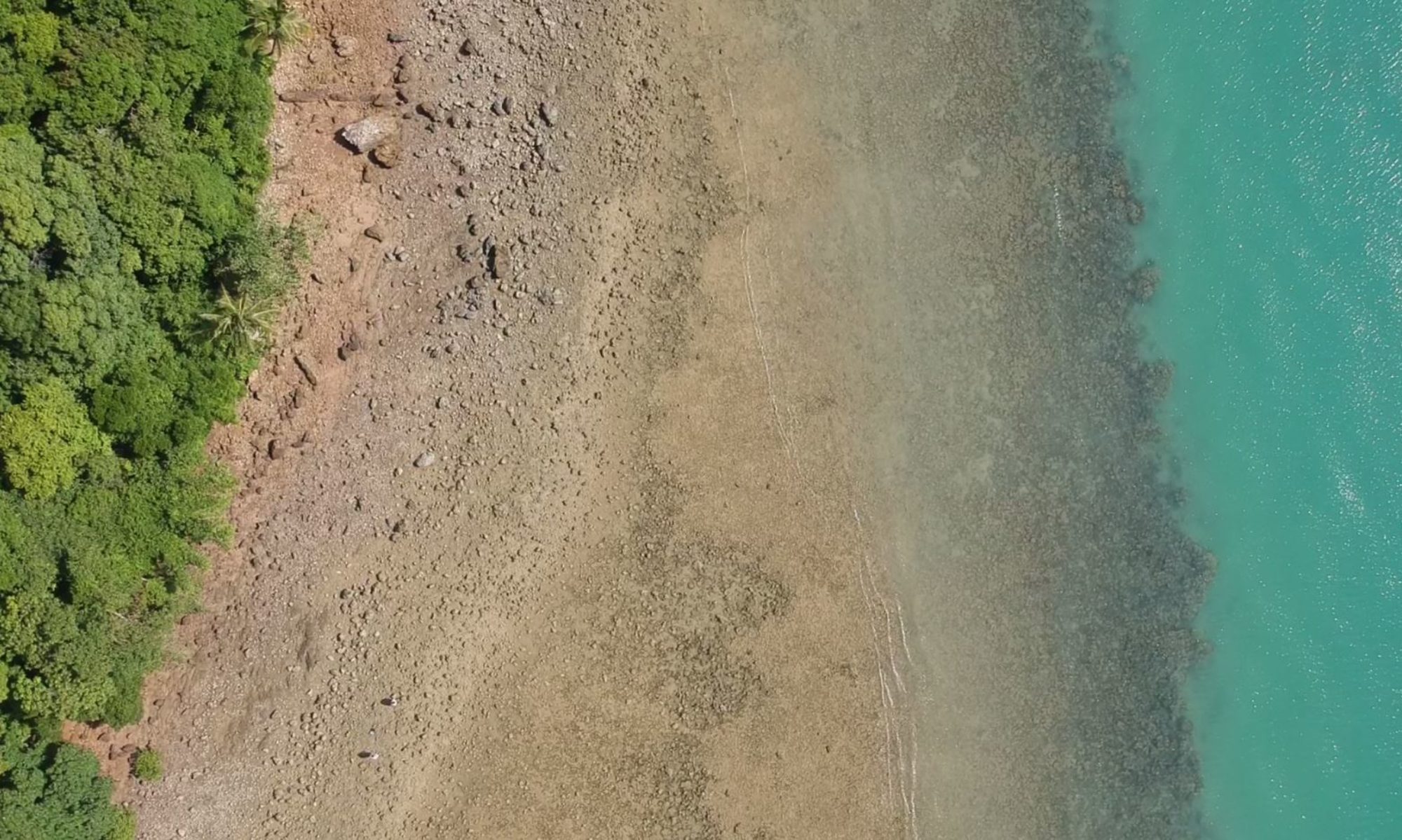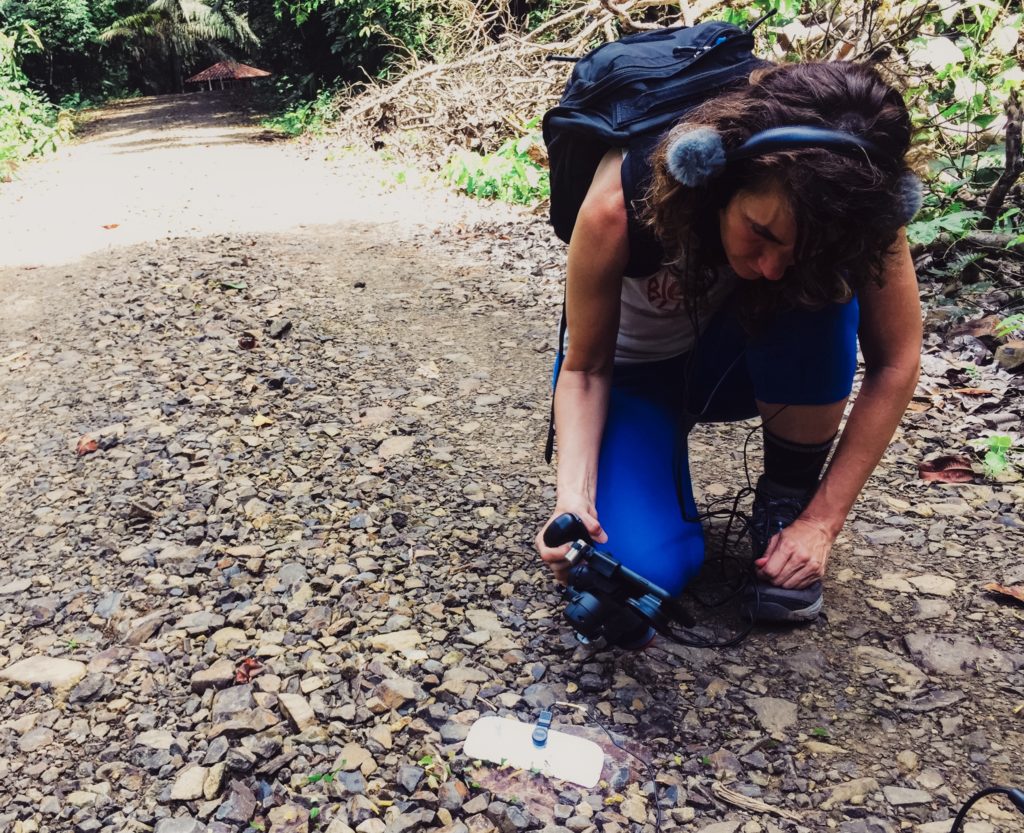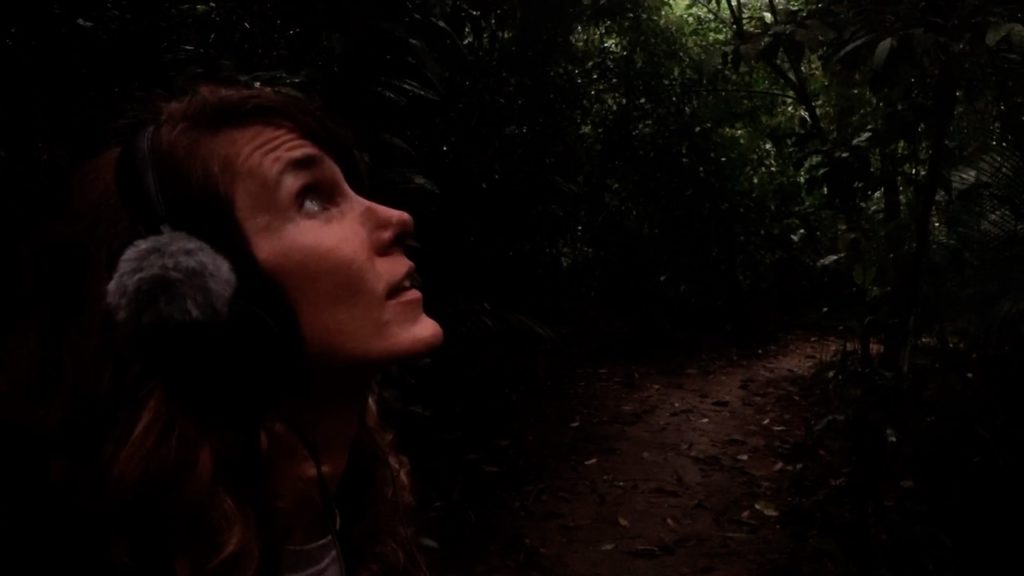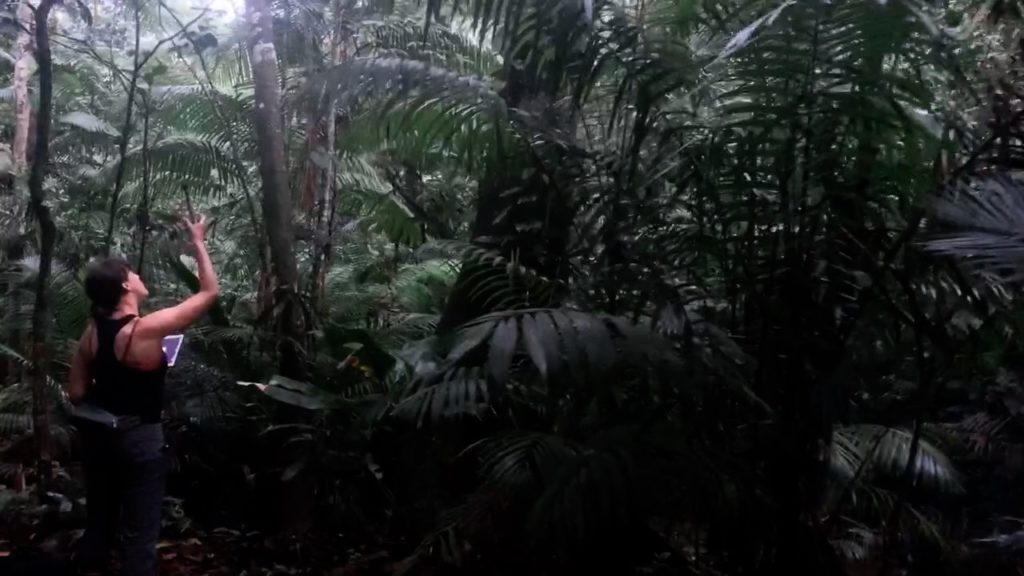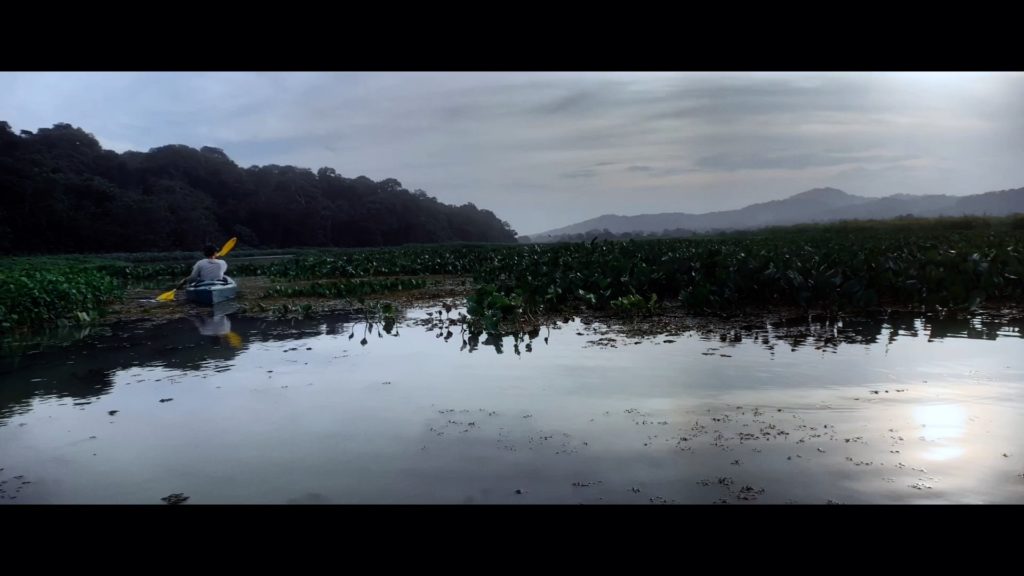I came to Dinacon already a devotee of agoutis. I had been observing them, photographing them, and following them around a city park in Rio de Janeiro for over a year.
In Rio the urban population of agoutis are not quite tame, but not quite wild any longer – they are not afraid of humans. Humans bring them vegetable scraps, french fries, even piles of cat food that they congregate around to enjoy. These agoutis only rarely flare up their butt hair, the signature agouti skittish gesture of fear. They co-exist with the population of stray cats, ducks, pigeons, geese, and peacocks that call the park home…
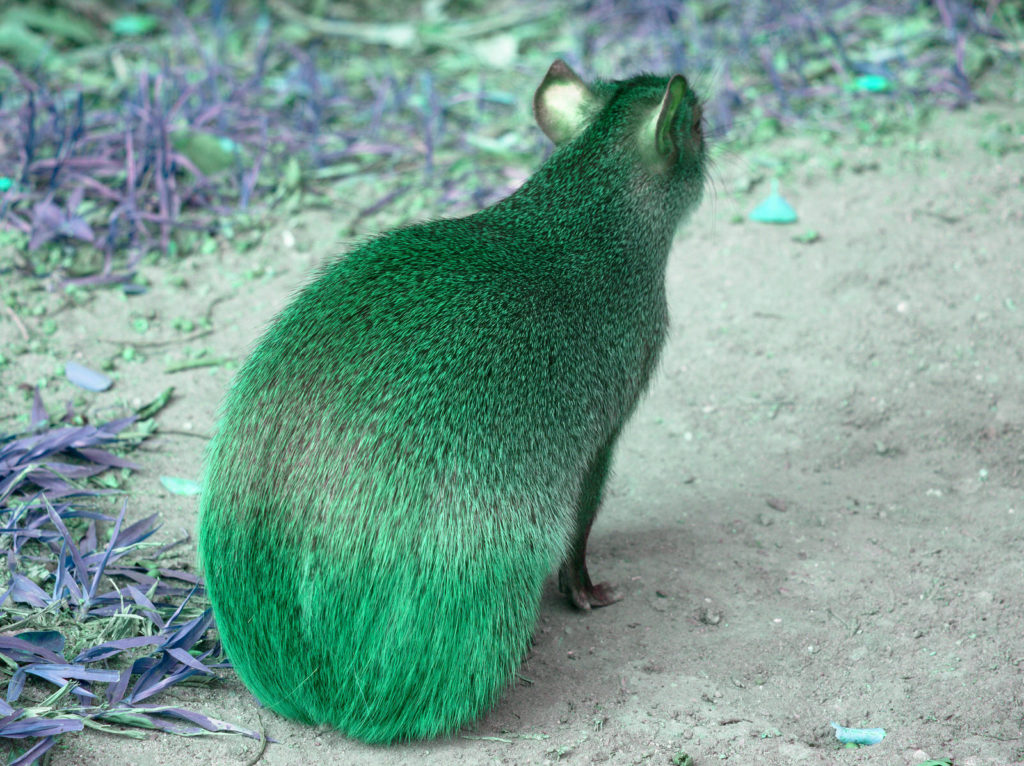
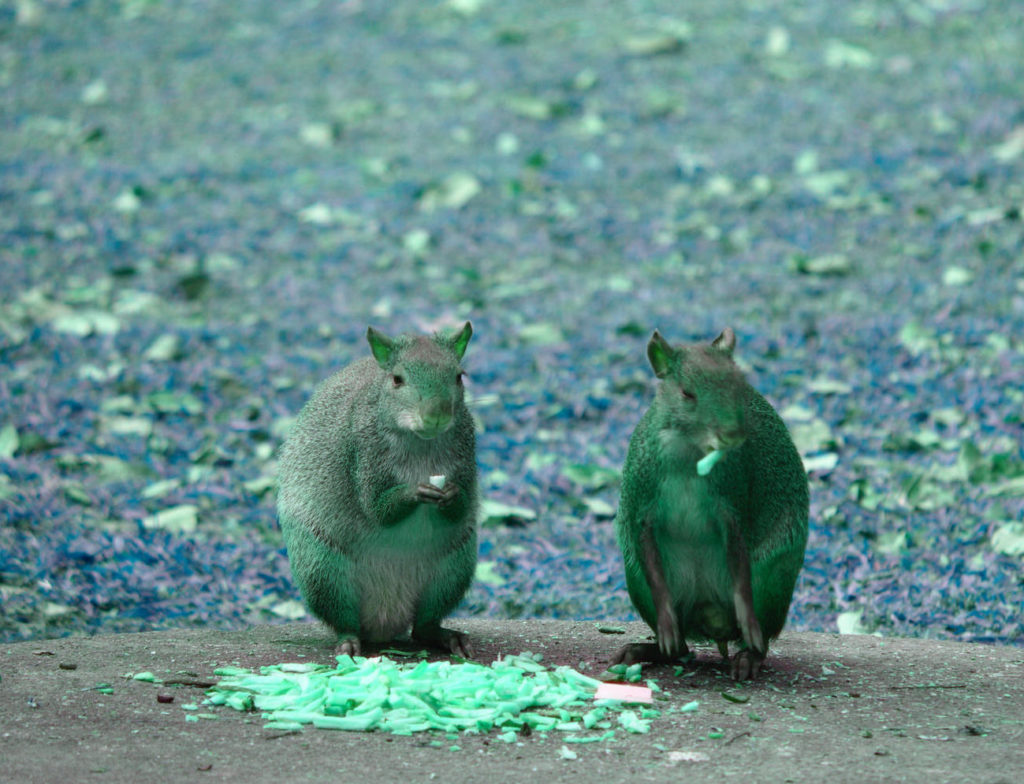
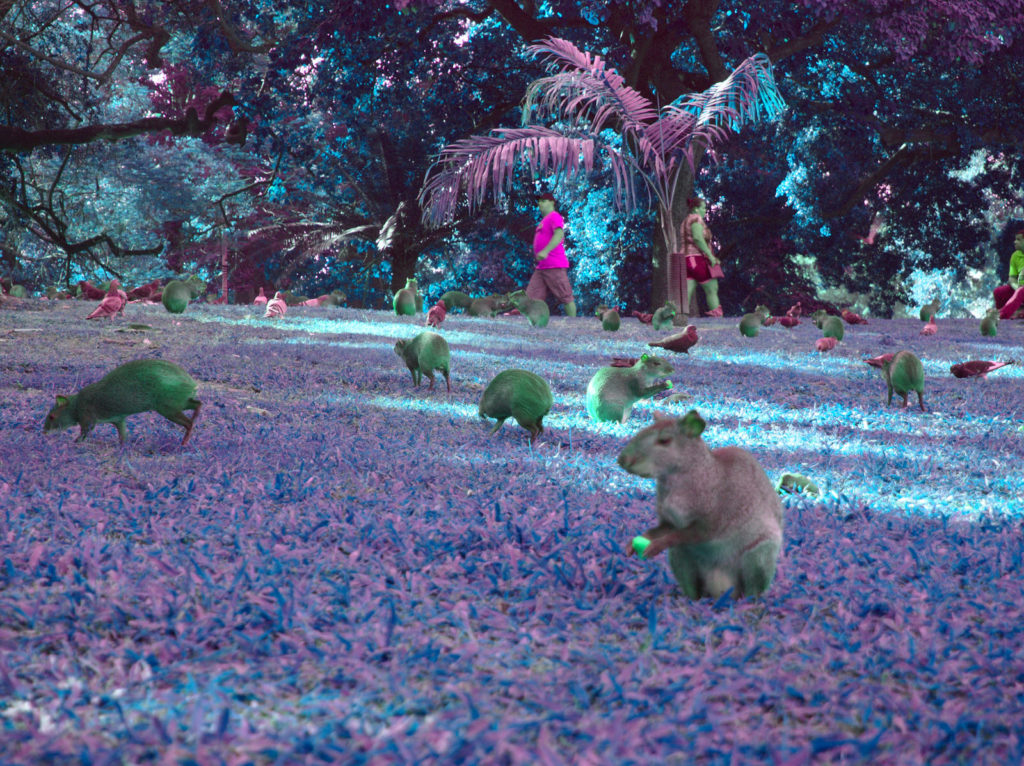
In Gamboa, I had planned to film the local agoutis. I knew on some level that they would be different from their quasi-domesticated Brazilian cousins, but I did not realize that my entire understanding of agouti behavior was skewed by the city population I knew.
In Gamboa, an agouti is approximately 7.92x more skittish (data forthcoming). They hear the crinkly sound of a human stepping on a decaying leaf on the ground, and they snap to attention, look up, and run away. The most common image I captured when I began agouti observation in Gamboa was that of a retreating rear end.
The biggest difference was how the jungle agoutis in Panama did not seem to crowd around in groups. I never observed more than two agoutis in the same place, and often if there were two grazing, one would attempt to dominate the other and scare it away (cue: flare butt hair). The urban agoutis act more like we do in cities, gathering, eating fried food. In the jungle, the agouti’s important job of burying and dispersing seeds around the forest seems to be a solo endeavor.
So: in order to observe the agoutis of Gamboa, I knew I needed to get closer, and get quieter.
I took note of a spot near the water on the Laguna trail where multiple agoutis had crossed the footpath – frantically, running from me. I went back to the same spot on different days, in the early afternoon, and saw agoutis retreating from me on multiple occasions. This was a place they liked. This would be my stakeout. I set up a very lo-fi camera trap: my Ricoh GR II fixed-lens camera, attached to a hanging vine with a gorilla tripod (approximate cost: R$15, or less than $4 USD).
Under the gaze of the camera, I set up an offering. This was not the french fries and cat food of the Rio park, but a near-rotting pile of orange peels, banana peels, and hibiscus flowers. I set the stage. The bright colors of my food offering lay against the greying palm underneath it. I walked away. I waited.
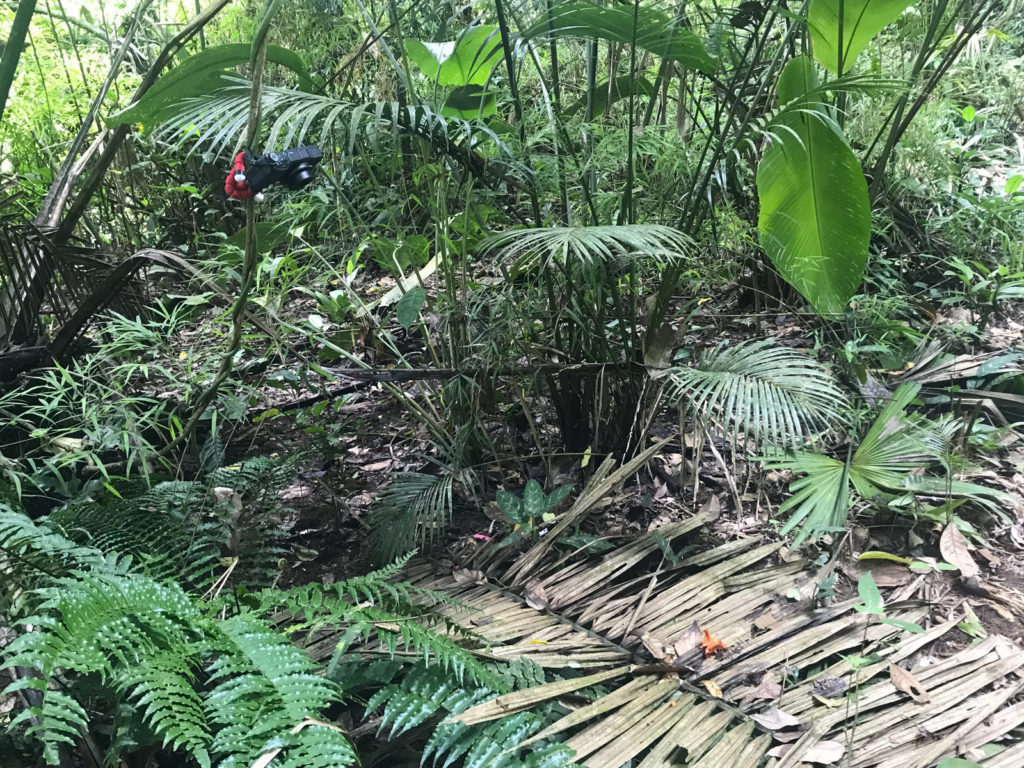
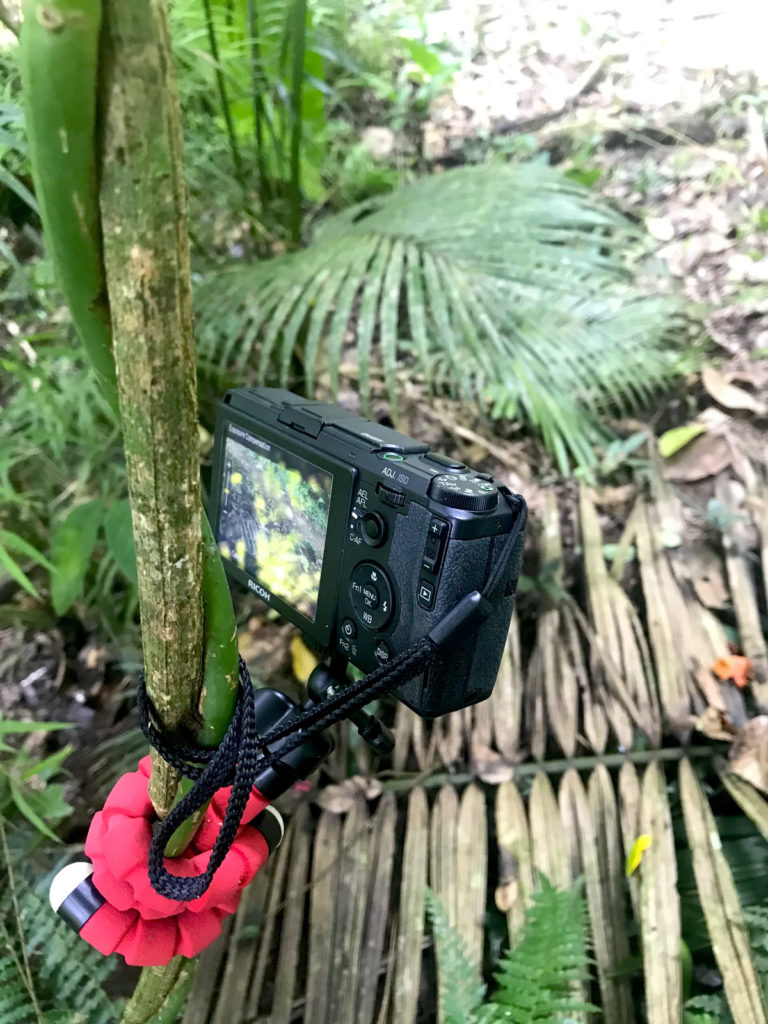
I waited until the forest forgot I was there. Or until I forgot to consider myself different than the forest. I looked through my scopes at hummingbirds, at toucans in the canopy. I knelt until I no longer felt my quads burning. A blue-crowned motmot landed on a branch inches above my face. A Panamanian flycatcher looked at me, asking. I became like a stone, and when I quieted the forest came alive, dense and throbbing.
I stayed wilding myself for a little more than an hour. When I stood up creaking and walked back to my camera, I saw that some of the food had been taken. I realized in that moment I could have caught any creature in the act – who else might want that banana peel?! But after about 40 minutes of filming only the food pile, my camera caught this:
key moments in the video:
0:18 – the second agouti arrives, clucking
0:22 – brief moment of shared snacking
0:47 – agouti fight!
1:30 – paws out, digging underneath the palm
2:47 – agouti returns, from under the palm
5:42 – return of the agouti, part ii
stills from the video:
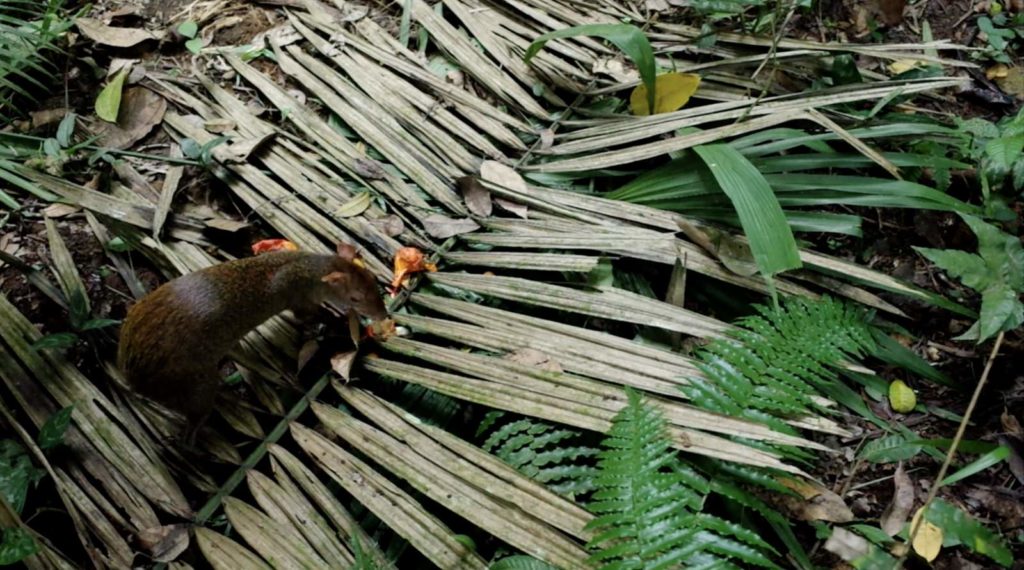
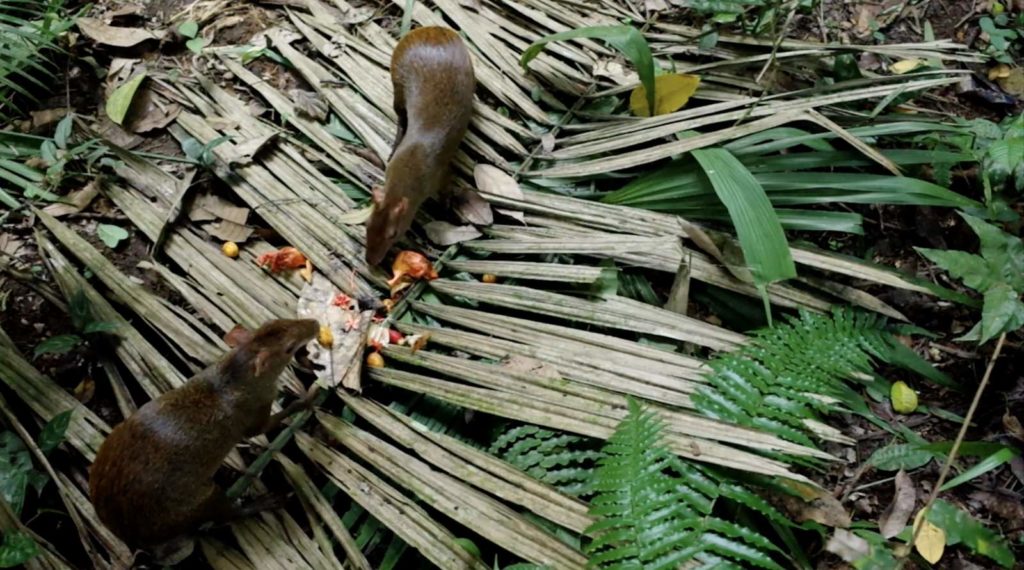
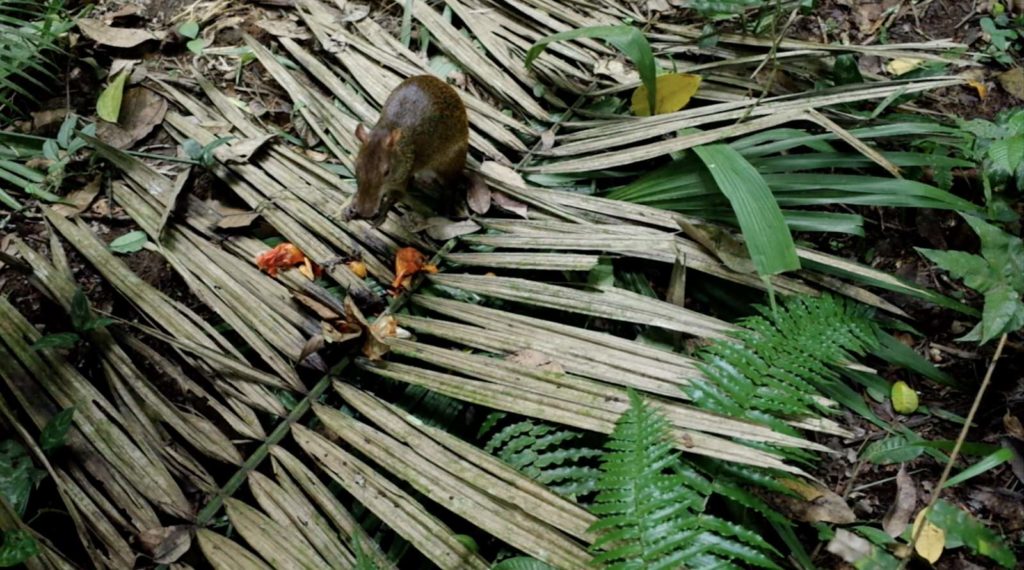
If the garbage-food offering was a step towards domestication for these jungle agoutis, my sitting in the woods was a step towards wildness. We met somewhere in the middle.
possible extensions of project:
-what would the urban agoutis of Rio have to say to the forest agoutis of Panama? with a similar simple set-up, a signal could be sent (Arduino connected to Internet) from one group to the other – an LED light, a banana peel being delivered…the above could have been Phase 1 of “Cross-Continental Cutia Communication” (cutia = the Brazilian Portuguese word for agouti)
-an agouti hide, like a birding hide, built to be able to disappear and observe like my camera
-more footage, and a full-on documentary about agoutis
Thanks to everyone at Dinacon! And to agoutis everywhere.
-Madeline Blount
http://mab.space
